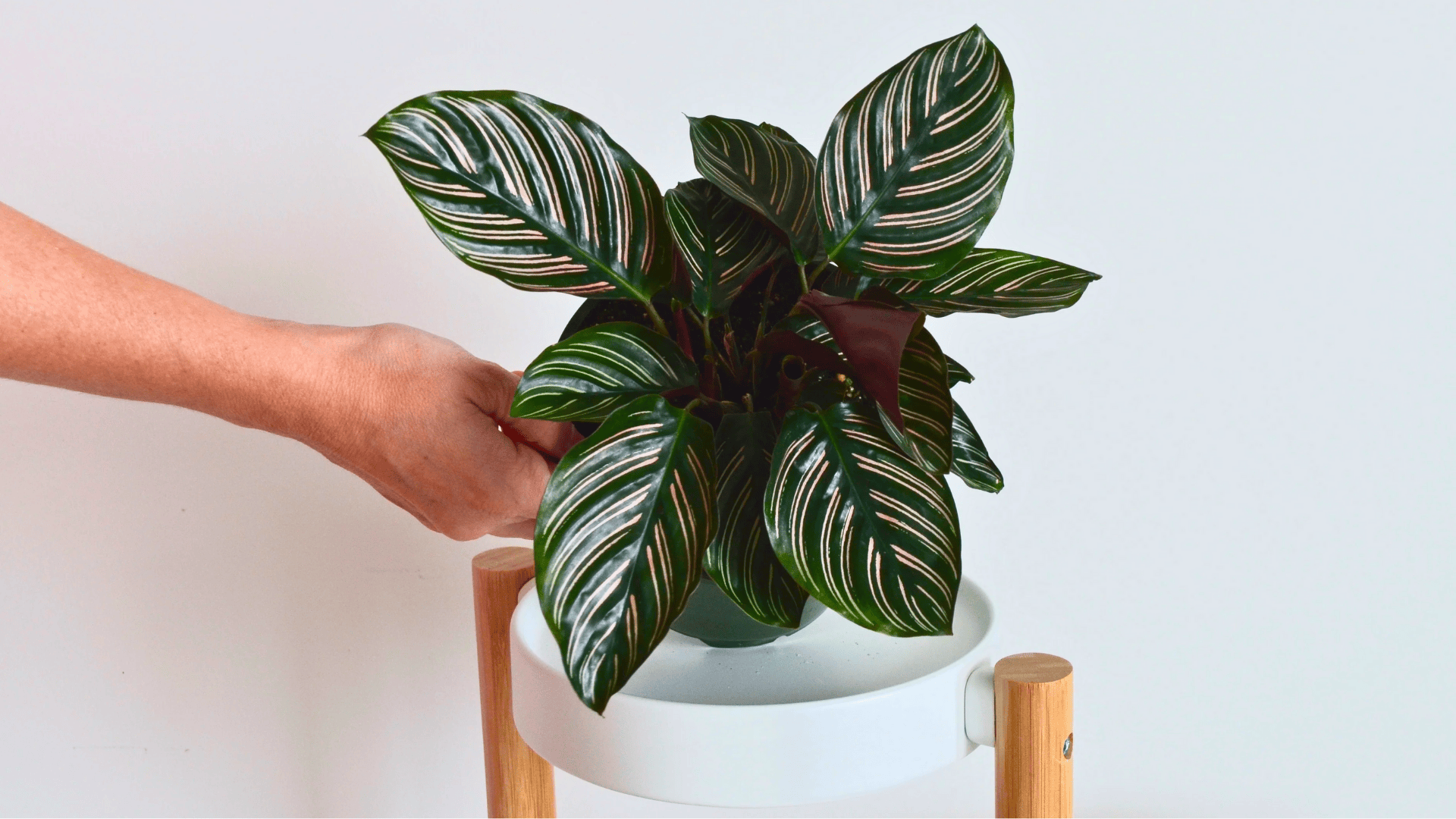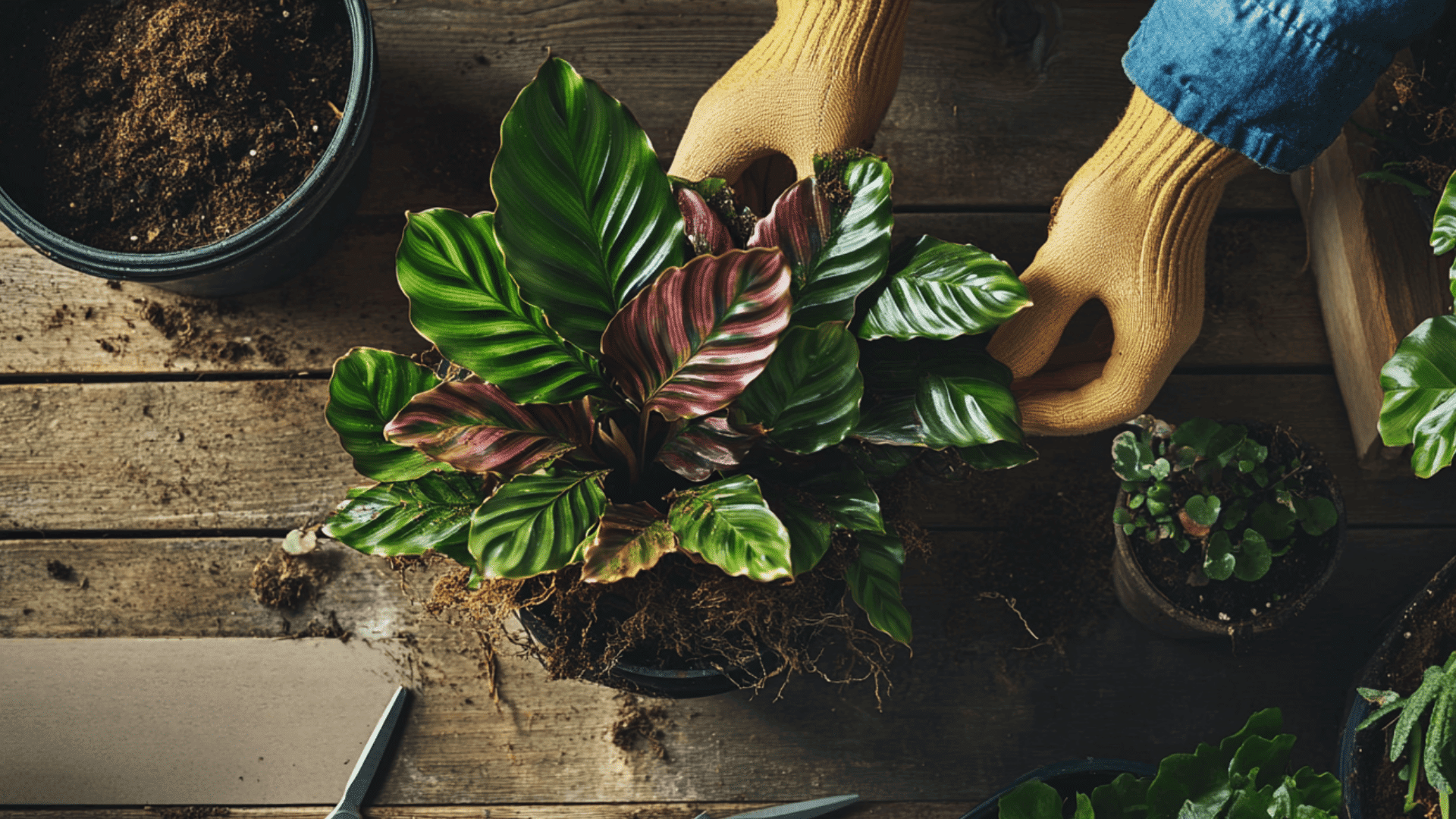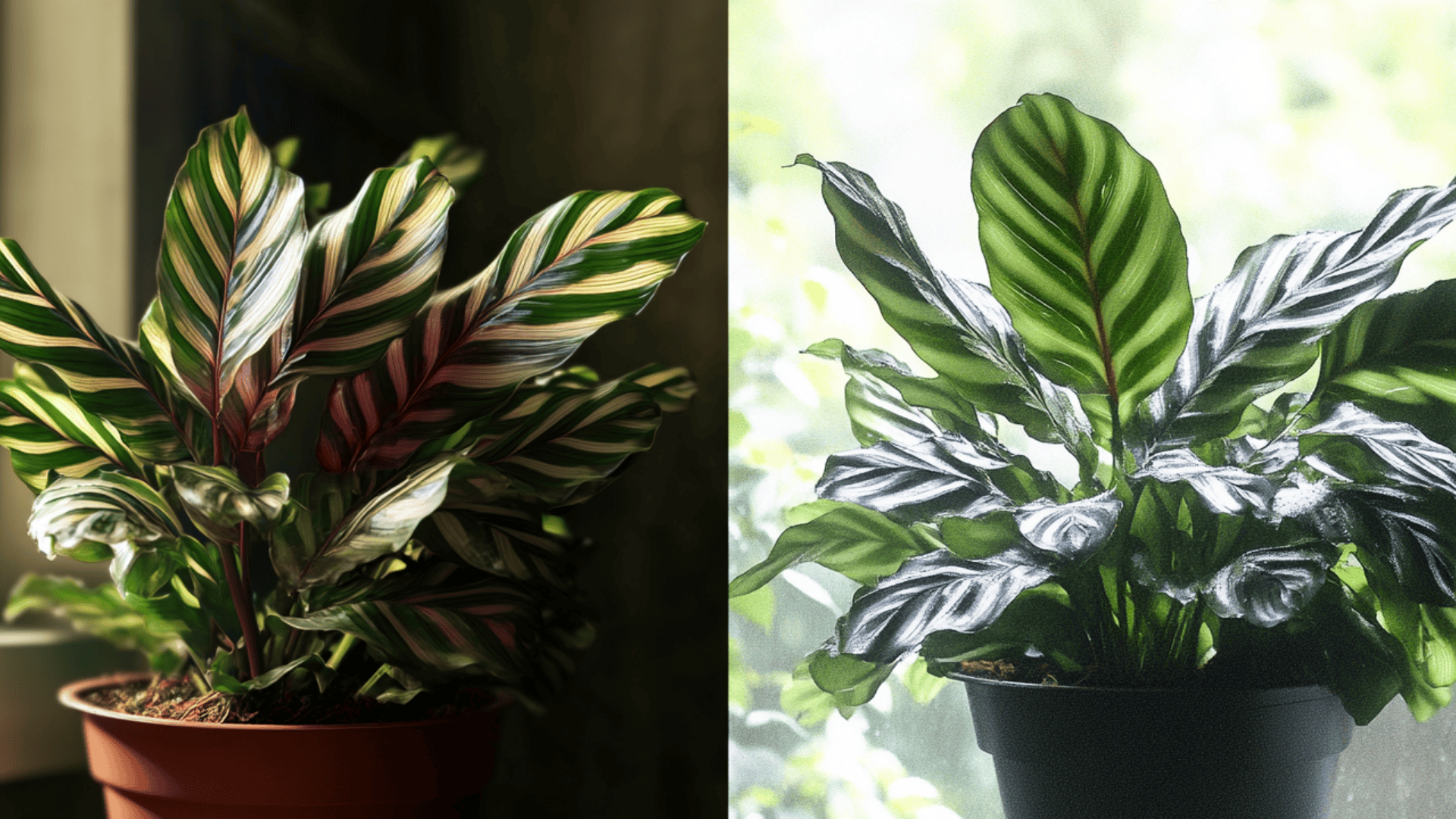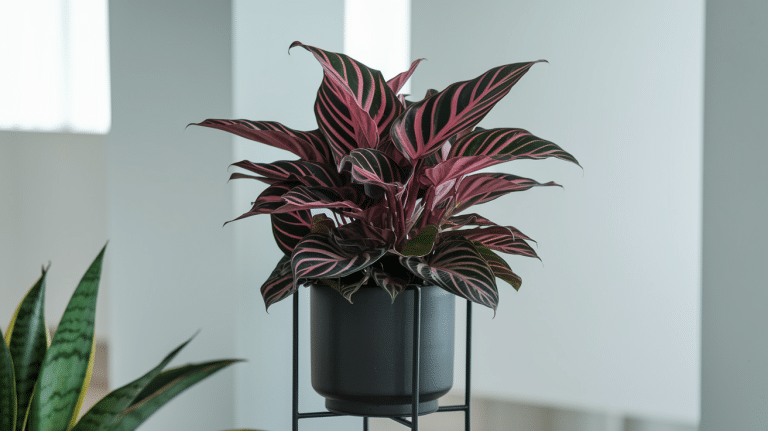Looking for a plant that adds beauty to your house? The Calathea Ornata, or Pinstripe Calathea, with its stunning pink-striped leaves, could be the perfect addition.
But caring for this delicate plant can be tricky. With its specific needs for light, humidity, and watering, it’s easy to feel overwhelmed.
Don’t worry! This guide will walk you through everything you need to know to help your Calathea Ornata thrive.
From choosing the right spot to dealing with common problems, we’ve got you covered.
Keep reading to find tips that’ll make your plant care easier and keep your Calathea looking its best!
What is the Calathea Ornata?
The Calathea Ornata, also known as the Pinstripe Calathea, is a beautiful plant from the rainforests of South America, especially Colombia and Venezuela.
It grows naturally in the shade of taller plants, where it enjoys low light and high humidity. Although it looks like a palm tree, it is not a true palm.
It is part of the Marantaceae family and is often called a “prayer plant” because of the way its leaves move. During the day, the leaves open up, and at night, they fold in, almost like the plant is “praying.”
This plant has glossy, oval-shaped leaves with bright pink or white stripes, which make it stand out. It grows slowly and doesn’t get too big, so it’s great for both beginners and experienced plant lovers.
The name “Calathea” comes from the Greek word “kalamai,” which means “reed,” while “ornata” means “ornamental,” referring to its beautiful, decorative leaves.
The Calathea Ornata adds a touch of beauty and sophistication to any home, making it a popular choice for indoor plant collectors.
How to Care for Your Calathea Ornata

Caring for your Calathea Ornata is simple once you understand its needs. Here’s how to keep your plant healthy and vibrant.
- Watering Needs: Keep the soil consistently moist but not soggy. Water your Calathea Ornata about once a week during the warmer months and less often in winter when the plant is resting. Use filtered or distilled water to avoid mineral buildup, which can harm the plant.
- Sunlight Requirements: This plant thrives in bright, indirect light. Direct sunlight can scorch the leaves and cause the beautiful stripes to fade. An ideal spot is near a window with sheer curtains.
- Temperature and Humidity: Calathea Ornata enjoys warm temperatures, ideally between 65°F to 80°F (18°C to 27°C). It also loves high humidity (50% or more). To increase humidity, you can use a humidifier, mist the leaves, or place the plant on a pebble tray filled with water.
- Soil Types and Fertilizer: For the best growth, use a well-draining, peat-based potting mix. During the growing season (spring and summer), feed your plant monthly with a diluted, balanced liquid fertilizer. Avoid fertilizing in the fall and winter when the plant is dormant.
Size and Growth of Calathea Ornata
Calathea Ornata is a slow-growing plant, making it a great choice for those who prefer low-maintenance indoor greenery.
Here’s what you can expect:
- Growth Potential: The plant typically grows to a height of 2 to 3 feet (60 to 90 cm), with a similar spread. It remains relatively compact, which makes it perfect for smaller spaces or as an accent plant.
- Slow Growth: Calathea Ornata is known for its slow growth, often taking years to reach its full size. This makes it ideal for people who want a plant that won’t quickly outgrow its space.
- Long-Term Care: As the plant matures, regular pruning is important to remove dead or damaged leaves. This helps keep the plant looking neat and encourages healthy growth. Pruning also helps maintain its shape and size over time.
Propagation of the Calathea Ornata

Calathea Ornata can be propagated by dividing the root ball. This method works best during repotting, especially in late spring when the plant is actively growing.
Here are the steps to propagate your Calathea Ornata:
Step 1: Gently Remove the Plant. Carefully remove the plant from its pot, being mindful not to damage the roots.
Step 2: Separate the Root Ball. Divide the root ball into sections, making sure each part has both roots and healthy leaves attached.
Step 3: Plant Each Division. Place each section in its own pot filled with fresh, well-draining potting mix. Ensure the roots are covered and the plant is secure.
Step 4: Water and Create Humidity. Water the new plants thoroughly and place them in a humid environment. You can use a humidity tray or mist the leaves to help the plant settle in.
By following these steps, your Calathea Ornata will have the best chance to grow strong and healthy from its new sections.
Pet Safety and Toxicity
Calathea Ornata is non-toxic to both humans and pets, making it a safe choice for homes with animals. You don’t need to worry about harmful effects if your pets come into contact with it.
However, it’s still a good idea to keep the plant out of reach of pets. Even though it’s not toxic, pets might chew on the leaves, which could damage the plant.
To keep both your pet and plant safe, place it in a spot that your pets can’t easily access.
Common Problems with Calathea Ornata
Calathea Ornata is generally a low-maintenance plant, but like all plants, it can face some issues.
Pests and Diseases
It is prone to pests like spider mites, mealybugs, aphids, and scale. Calathea Ornata can also suffer from bacterial and fungal infections, which are often caused by overwatering or poor air circulation.
Troubleshooting
- Yellowing Leaves: This could be due to inconsistent watering, low humidity, or a lack of nutrients.
- Brown Leaf Tips: Often a sign of low humidity or underwatering.
Preventative Care
To avoid these issues, maintain consistent watering, ensure the plant is in a humid environment, and provide good air circulation. Regularly inspect for pests and adjust care as needed to keep your Calathea healthy.
Indoor vs. Outdoor Growth of Calathea Ornata

Indoor Conditions: Calathea Ornata is best suited for indoor environments due to its sensitivity to temperature changes and specific light needs. It thrives in bright, indirect light and stable temperatures.
Outdoor Conditions: Calathea Ornata can be grown outdoors in climates that fall under USDA zones 10-12. It should be placed in shaded areas with high humidity to ensure proper growth.
Cold Tolerance: This plant is not frost-tolerant, so protect it from temperatures below 50°F (10°C). If grown outdoors in colder regions, bring it indoors when the weather turns chilly.
Benefits of the Calathea Ornata
- Aesthetic Appeal: Its striking pink or white pinstriped leaves improve the beauty of any indoor space.
- Air Purification: Like many houseplants, it helps purify the air by removing harmful toxins and improving air quality.
- Low Maintenance: Calathea Ornata requires minimal care, making it a great choice for both beginners and experienced plant owners.
- Unique Leaf Movement: Its ability to fold and unfold leaves throughout the day adds a dynamic, living touch to your home decor.
- Pet Safe: Unlike many other plants, Calathea Ornata is non-toxic to both humans and pets, making it a safe addition to homes with animals
Conclusion
Calathea Ornata is a stunning and easy-to-care-for plant that can brighten up any room.
By following the care tips in this guide, you can keep your plant healthy and looking its best. It’s a perfect choice for both beginners and those with more experience.
With its striking pink stripes and the unique way its leaves move, it’s a great addition to your home.
Why not bring a Calathea Ornata into your home today? Find the right spot and enjoy its beauty.
If you’re looking for more helpful plant care tips, be sure to read our other blog posts.













